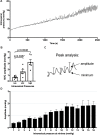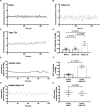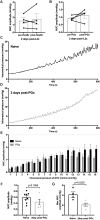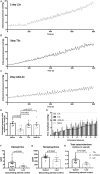Preserved Adrenal Function After Lumbar Spinal Cord Transection Augments Low Pressure Bladder Activity in the Rat
- PMID: 30233411
- PMCID: PMC6130007
- DOI: 10.3389/fphys.2018.01239
Preserved Adrenal Function After Lumbar Spinal Cord Transection Augments Low Pressure Bladder Activity in the Rat
Abstract
Spinal cord injury (SCI) disconnects supraspinal micturition centers from the lower urinary tract resulting in immediate and long-term changes in bladder structure and function. While cervical and high thoracic SCI have a greater range of systemic effects, clinical data suggest that those with lower (suprasacral) injuries develop poorer bladder outcomes. Here we assess the impact of SCI level on acute changes in bladder activity. We used two SCI models, T3 and L2 complete transections in male Wistar rats, and compared bladder pressure fluctuations to those of naïve and bladder-denervated animals. By 2 days after L2 transection, but not T3 transection or bladder denervation, small amplitude rhythmic contractions (1 mmHg, 0.06 Hz) were present at low intravesical pressures (<6 mmHg); these were still present 1 month following injury, and at 3 months, bladders from L2 SCI animals were significantly larger than those from T3 SCI or naïve animals. Low-pressure contractions were unaffected by blocking ganglionic signaling or bladder denervation at the time of measurements. L2 (and sham surgery) but not T3 transection preserves supraspinal adrenal control, and by ELISA we show lower plasma adrenal catecholamine concentration in the latter. When an adrenalectomy preceded the L2 transection, the aberrant low-pressure contractions more closely resembled those after T3 transection, indicating that the increased bladder activity after lumbar SCI is mediated by preserved adrenal function. Since ongoing low-pressure contractions may condition the detrusor and exacerbate detrusor-sphincter dyssynergia, moderating bladder catecholamine signaling may be a clinically viable intervention strategy.
Keywords: adrenal gland; bladder; catecholamines; non-voiding contractions; spinal cord injury.
Figures






Similar articles
-
The effects of Glivec on the urinary bladder excitation of rats with suprasacral or sacral spinal cord transection.J Surg Res. 2013 Aug;183(2):598-605. doi: 10.1016/j.jss.2013.02.030. Epub 2013 Mar 13. J Surg Res. 2013. PMID: 23608618
-
Changes in micturition after spinal cord injury in conscious rats.Urology. 1999 Nov;54(5):929-33. doi: 10.1016/s0090-4295(99)00234-4. Urology. 1999. PMID: 10565763
-
Pathophysiology, Clinical Importance, and Management of Neurogenic Lower Urinary Tract Dysfunction Caused by Suprasacral Spinal Cord Injury.J Vet Intern Med. 2016 Sep;30(5):1575-1588. doi: 10.1111/jvim.14557. Epub 2016 Aug 16. J Vet Intern Med. 2016. PMID: 27527382 Free PMC article. Review.
-
"Skin-CNS-bladder" reflex pathway for micturition after spinal cord injury and its underlying mechanisms.J Urol. 1999 Sep;162(3 Pt 1):936-42. doi: 10.1097/00005392-199909010-00094. J Urol. 1999. PMID: 10458412
-
Epidemiology and pathophysiology of neurogenic bladder after spinal cord injury.World J Urol. 2018 Oct;36(10):1517-1527. doi: 10.1007/s00345-018-2301-z. Epub 2018 May 11. World J Urol. 2018. PMID: 29752515 Review.
References
LinkOut - more resources
Full Text Sources
Other Literature Sources

